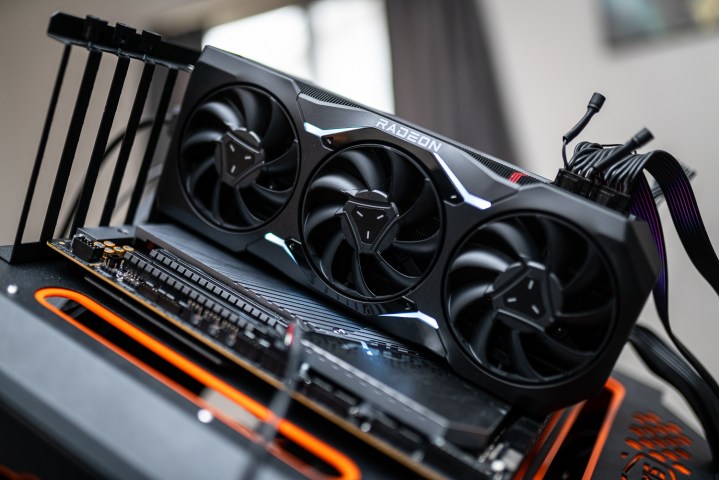
An interesting AMD patent has just surfaced, and although it was filed a while back, finding it now is all the more exciting because this tech might be closer to appearing in future graphics cards. The patent describes a multi-chiplet GPU with three separate dies, which is something that could both improve performance and cut back on production costs.
In the patent, AMD refers to a GPU that’s partitioned into multiple dies, which it refers to as GPU chiplets. These chiplets, or dies, can either function together as a single GPU or work as multiple GPUs in what AMD refers to as “second mode.” The GPU has three modes in total, the first of which makes all the chiplets work together as a single, unified GPU. This enables it to share resources and, as Tom’s Hardware says, allows the front-end die to deal with command scheduling for all the shader engine dies. This is similar to what a regular, non-chiplet GPU would do.
The second mode is where it gets interesting. In this mode, every chiplet counts as an independent GPU. Each GPU handles its own task scheduling within its shader engines and doesn’t interfere with the other chiplets. Finally, the third mode is a mix of the two, where some GPUs function as their own entity while others combine the chiplets to function together.

As mentioned, this patent is not new. It was filed on December 8, 2022, just after AMD released the RX 7900 XTX and the RX 7900 XT. Although leakers have predicted that AMD might go down the multi-chiplet route for at least a generation or two now, this architecture is currently only really used in AMD’s data center GPUs. AMD has already dipped its toes in similar tech in RDNA 3, though, with a design that used a graphics compute die (GCD) and multiple memory cache dies (MCMs) for the memory interface.
There are tangible benefits to switching to this type of architecture, as per the patent: “By dividing the GPU into multiple GPU chiplets, the processing system flexibly and cost-effectively configures an amount of active GPU physical resources based on an operating mode.” If it could turn out to be cheaper to produce these types of GPUs rather than using increasingly larger monolithic dies, we might start seeing this design outside of the data center and in the GPUs we all use in our own computers.
Early leaks about RDNA 4 graphics cards teased AMD going with a full multi-chiplet design, and it’s easy to imagine that the final result could have resembled what we see in the patent. However, with the news that AMD is sticking to midrange graphics cards in this next generation, any hope of a multi-chiplet GPU seems lost for now. Perhaps we’ll see this design come to life in RDNA 5.
Editors’ Recommendations
Services Marketplace – Listings, Bookings & Reviews

